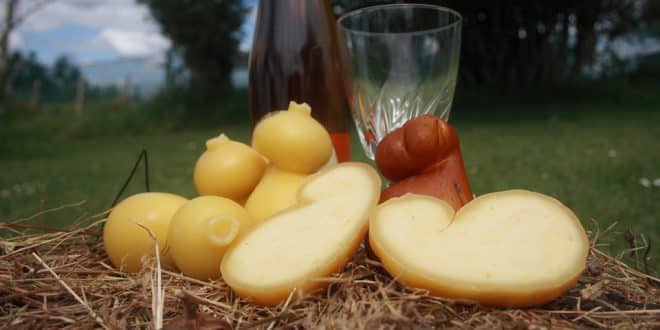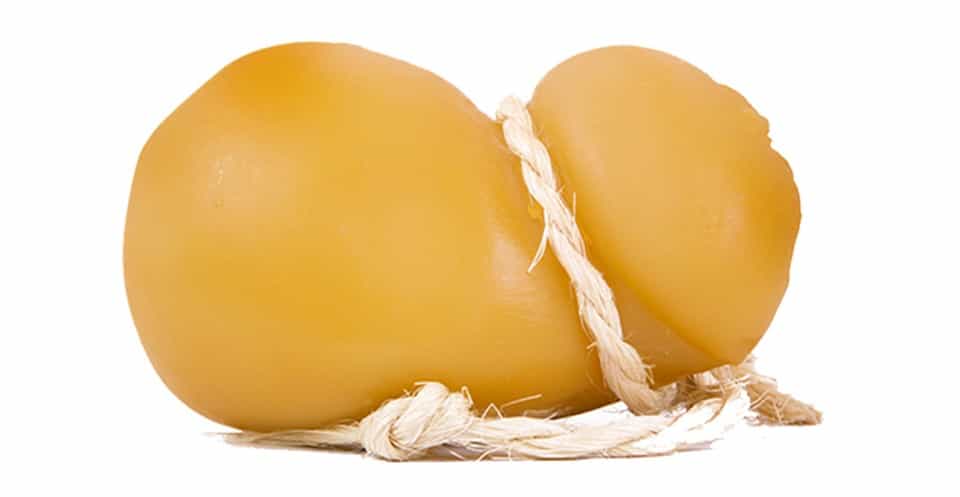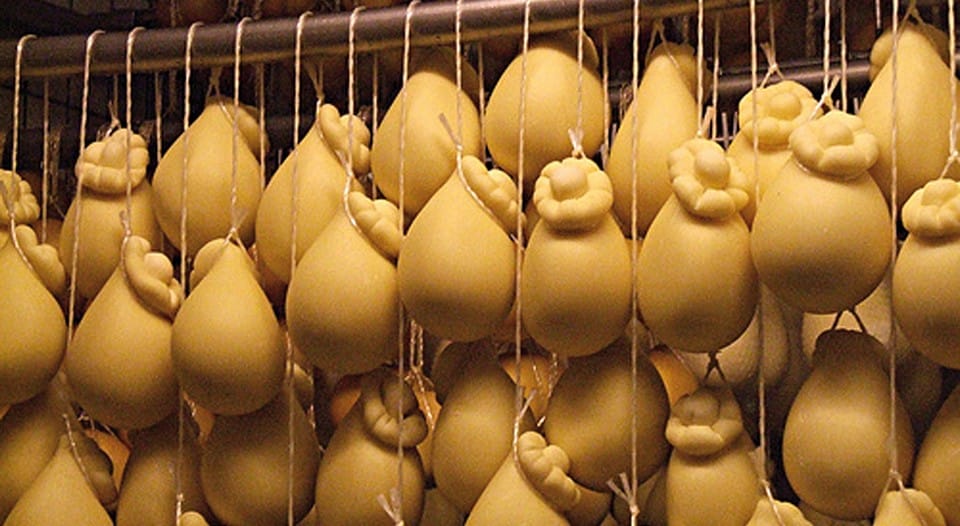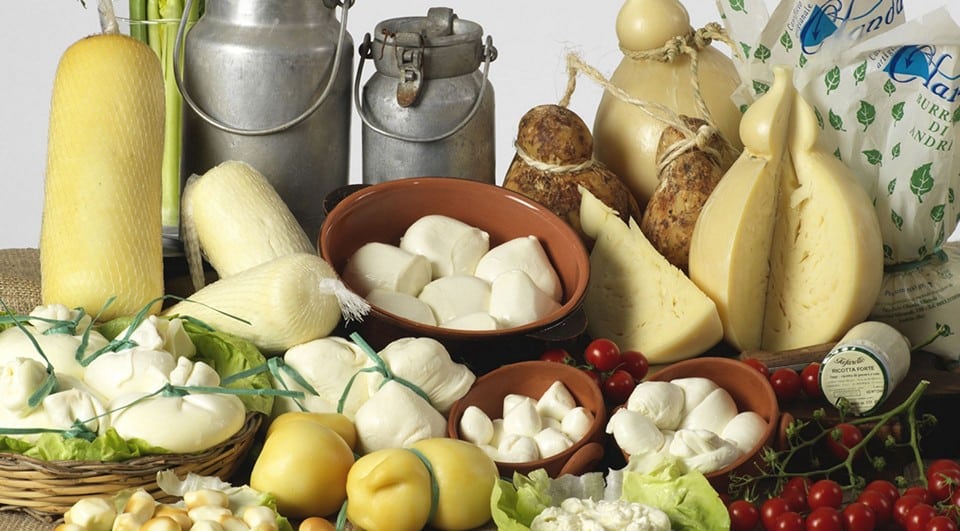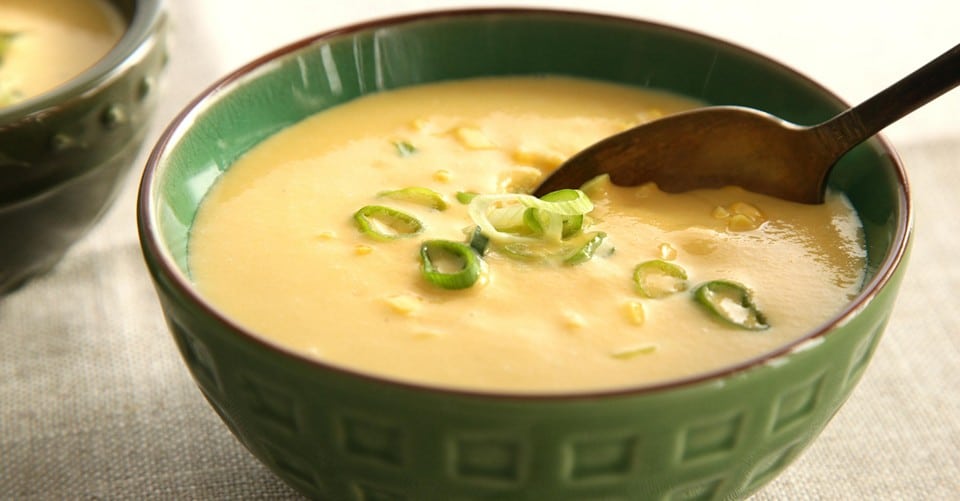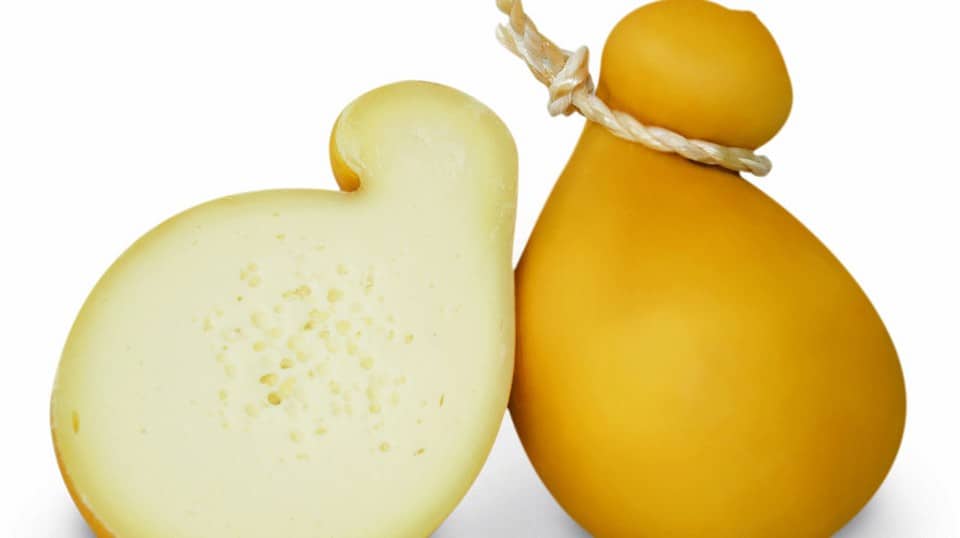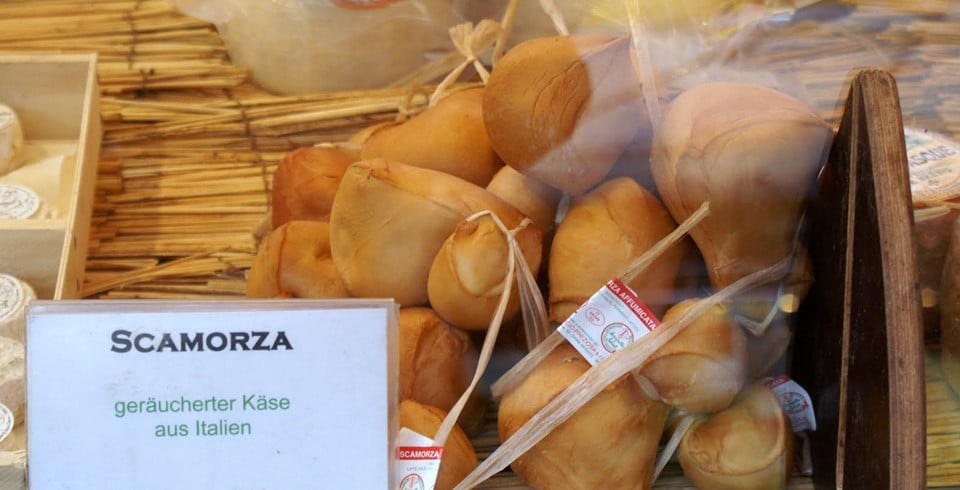Scamorza – not a very pleasant word for the ear. But if you find out that it comes from the Italian “capa mozza,” meaning “cut head,” then your imagination will surely take us to some cave with orcs. However, in reality, it’s not so bad. Scamorza is an Italian cheese of the Pasta Filata category.
It received its name thanks to its unusual pear-like shape. During the drying process, it is hung by a string, about one-third of the cheese’s body. As a result, it creates the impression of a hanging little chubby person. Sometimes, Scamorza is even referred to as “strangled cheese.” Are you curious to get to know it better? Let’s uncover all its secrets.
Page Contents
Origin Version
Scamorza does not have as rich and precisely dated history as other well-known Italian cheeses. Perhaps the reason is that it does not belong to the DOP category of products, whose lives are closely documented and traditional production methods are strictly followed.
The roots of Scamorza can be traced back to the history of Provolone cheese, which you can read about in our article “Provolone – a hard Italian cheese.”
There is an opinion that Scamorza was born accidentally in southern Italy in the late 19th century as a result of a mistake during the production of Provolone.
The curd turned out to be too acidic, so a hotter liquid was used to process it. Thus, a new type of cheese was created. This theory deserves trust since the milk processing techniques for Scamorza and Provolone are very similar.
How they prepare it in the production
Currently, scamorza cheese is prepared in many regions of Italy, but the main productions are concentrated in Molise, Abruzzo, Puglia, and Calabria.
Although the manufacturing of the cheese is not strictly regulated, the core technology remains unchanged in all cheese factories. Scamorza is produced from cow’s milk. Variations using sheep’s, goat’s, or even buffalo milk exist but are less common.
Raw milk is placed in steel vats and heated to 35-37 degrees Celsius, while slowly stirring to ensure even distribution of heat. Once the milk reaches the desired temperature, whey and rennet are added, and it is left to curdle for approximately 20 minutes. The cheesemaker then breaks the curd into corn kernel-sized particles using a special tool. The curd is then heated to 40-42 degrees Celsius for 3-8 hours to mature and allow the cheese to settle completely.
The cheesemaker determines the end of the process as follows: small curd lumps are taken out of the vat, placed in hot water, and tested for their stretchability (if the cheese becomes elastic and can be stretched without breaking, it can proceed to the next stage).
The curd is removed from the vat, placed on draining tables to remove excess whey, and cut into small slices. Each slice is then placed in hot water at a temperature of 80 degrees Celsius and continuously stretched by hand until the cheese mass becomes homogeneous. Initially, scamorza is given a spherical shape, and then, by pressing with their fingers, cheese makers form the “neck” of the cheese.
The cheese heads are rinsed in cold water for about 30 minutes and then soaked in brine for 20 minutes for salting. After salting, the cheeses are tied with strings and hung for drying for several days.
Scamorza is produced in both fresh and smoked (Scamorza Affumicata) forms. It is worth noting that among Italian consumers, the smoked variety of scamorza (Scamorza Affumicata) is more popular.
What are the differences between Scamorza, Provolone, and Caciocavallo?
You won’t believe it, but some residents of Italy are unaware of the differences between the smoked versions of Scamorza, Provolone, and Caciocavallo cheeses. It’s not that they are similar in taste; true gourmets know better. It’s just that ordinary consumers sometimes don’t realize that they are buying completely different cheeses. The only similarity among these cheeses is that they belong to the pasta filata category.
So, here are the differences between Provolone and Scamorza:
- Provolone is made exclusively from cow’s milk, while Scamorza can be made from various types of milk, including buffalo, goat, and sheep milk.
- During the production process, Scamorza is cooked after the curdling, whereas Provolone is not subjected to this process.
- The pear-shaped head of Provolone can weigh up to 1 kg, while Scamorza does not exceed 500 g.
- Smoked Scamorza matures for several days, whereas Provolone requires a minimum of 3 months of aging.
- Provolone Affumicato has a piquant taste, while Smoked Scamorza is delicate and slightly sweet, both with a smoky aroma.
The difference between smoked Caciocavallo and Scamorza follows the first three points mentioned above regarding the milk and production process. Caciocavallo is an aged cheese that matures for at least a year, resulting in a spicy and slightly sharp flavor.
How to enjoy and use them
Scamorza is a semi-soft cheese with a texture similar to mozzarella. The taste of fresh Scamorza is sweet, delicate, and milky. Its consistency is elastic, with a pale yellow rind and white interior. The smoked variety has a smoky aroma, a more compact texture, and a straw-brown color.
Italian housewives often use Scamorza as a substitute for mozzarella in recipes. The fresh version enhances the flavor of salads and meats. It can be grated over pizza, pasta, and risotto since it melts beautifully.
Scamorza Affumicata is enjoyed on its own or added to soups to impart a smoky flavor. It pairs exceptionally well with basil, sweet peppers, garlic, olive oil, rosemary, tomatoes, and balsamic vinegar. Smoked Scamorza makes for a delightful appetizer when paired with mature wines such as Chardonnay, Pinot Grigio, or Orvieto.
Scamorza should be stored in the refrigerator, wrapped in food wrap, for no more than 4-5 days.
A particularly popular recipe in Italy is fried Scamorza Affumicata. And we, as dedicated friends of all homemakers, are eager to share it with you.
Recipe for Fried Scamorza
To prepare this delicious delicacy, you will need:
- 200 grams of smoked scamorza;
- 100 grams of flour;
- 100 grams of breadcrumbs;
- 1 egg;
- Salt;
- Vegetable oil for frying;
- Lettuce leaves for serving.
Cut the scamorza into 1 cm thick slices. Beat the egg well. Coat the cheese slices in flour, then dip them in the egg and breadcrumbs. Be careful and try to distribute the breading evenly. Place the prepared semi-finished product on a plate and put it in the freezer for 10 minutes (this prevents the cheese from melting too quickly during frying). Heat oil in a pan in an amount that covers the slices completely, and fry them until golden brown. To remove excess oil, blot the fried scamorza with paper towels. It is preferable to serve this delicious dish on lettuce leaves, after seasoning them with salt, unless, of course, your loved ones don’t devour it before.
In recipes, chefs can replace scamorza with smoked cheeses such as suluguni or sausage cheese. When choosing the latter option, it is important to pay attention to the authenticity of the cheese.
Caloric Content and Benefits
The caloric content of Scamorza cheese is lower compared to other types of cheese. In 100 grams of the product, you’ll find:
- 334 kilocalories;
- 25 grams of protein;
- 25.6 grams of fat;
- 1 gram of carbohydrates;
- 65 milligrams of cholesterol.
Like all Italian cheeses, Scamorza is an excellent source of protein, which is essential for building muscle tissue, synthesizing hormones and enzymes, and forming immune cells in the body. The increased protein content is particularly important for athletes, children, pregnant women, and breastfeeding mothers.
Scamorza cheese contains an ample amount of calcium (392 grams) and phosphorus (229 grams), which support the healthy condition of human bones and teeth.
The equivalent activity of retinol (vitamin A) in 100 grams of cheese is 268. This means that a portion of 50 grams of cheese will cover 19% of the daily requirement for this vitamin. Vitamin A is responsible for normal vision, participates in the function of the thyroid gland, and helps prevent inflammatory processes.
Despite its positive properties, it’s worth noting that a significant portion of the fats in Scamorza cheese are saturated fats. Therefore, it should be consumed with caution by individuals who have weight management concerns.
Price in Italy
Since the production of Scamorza cheese is not strictly regulated and widely available throughout Italy, it falls into the category of affordably priced products.
When visiting Italy, you can purchase Scamorza cheese in practically any store at a price ranging from 2.5 to 4 euros for 250 grams or approximately 15 euros per kilogram.
That’s all the information you could find about the beloved “headless” cheese. It seems worthwhile to travel to Italy to fully immerse yourself in such a wonderful world of cheese. Live joyfully, love passionately, travel light, and remember: “You won’t suffocate or kill Scamorza cheese, but you’ll definitely enjoy eating it!”
Interesting Facts about Scamorza
- Scamorza, a traditional Italian cheese, is known for its unique shape and texture. It is often referred to as “smoked mozzarella” due to its similar appearance, but it has its own distinct characteristics and flavors.
- One fascinating aspect of Scamorza is its production process. The cheese is shaped into a pear or a cylinder and then hung to dry, giving it a distinctive teardrop shape. This traditional method adds to its visual appeal and contributes to its unique texture.
- Scamorza is enjoyed both fresh and smoked. The smoked version undergoes a smoking process, which infuses it with a smoky aroma and flavor. This adds an extra layer of complexity and makes it a popular choice for grilling or incorporating into recipes that benefit from a hint of smokiness.
- The texture of Scamorza is semi-soft when fresh, with a creamy and slightly elastic consistency. As it ages, the cheese becomes firmer and denser, allowing it to be sliced or grated for various culinary applications.
- Scamorza is a versatile cheese that can be used in a wide range of dishes. It melts beautifully, making it ideal for pizzas, sandwiches, and pasta bakes. It can also be enjoyed on a cheese platter or as a standalone snack.
- Scamorza pairs well with a variety of ingredients, both savory and sweet. It complements cured meats, grilled vegetables, and fresh herbs. For a delightful contrast, it can be paired with sweet fruits, such as figs or grapes, or drizzled with honey for a touch of sweetness.
- Scamorza is believed to have originated in Southern Italy, particularly in the regions of Apulia, Campania, and Molise. It has since gained popularity throughout Italy and internationally for its delicious flavor and versatility in cooking.
- Scamorza is a cheese that invites creativity in the kitchen. Its mild yet distinctive taste, along with its melting qualities, makes it a favorite among chefs and home cooks alike. It can elevate a simple dish into something special with its unique flavors and smooth, creamy texture.
- Scamorza is a cheese that appeals to all ages. Its mild flavor profile makes it suitable for children, while its versatility and ability to enhance various recipes make it a favorite among seasoned food enthusiasts.
- Scamorza is a cheese that showcases the artistry and craftsmanship of Italian cheesemakers. The dedication and expertise required to shape and age the cheese, along with the traditional smoking process, contribute to its exceptional quality and taste, making it a true treasure of Italian cuisine.
 Italy for me From Italy with love
Italy for me From Italy with love

